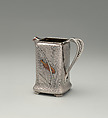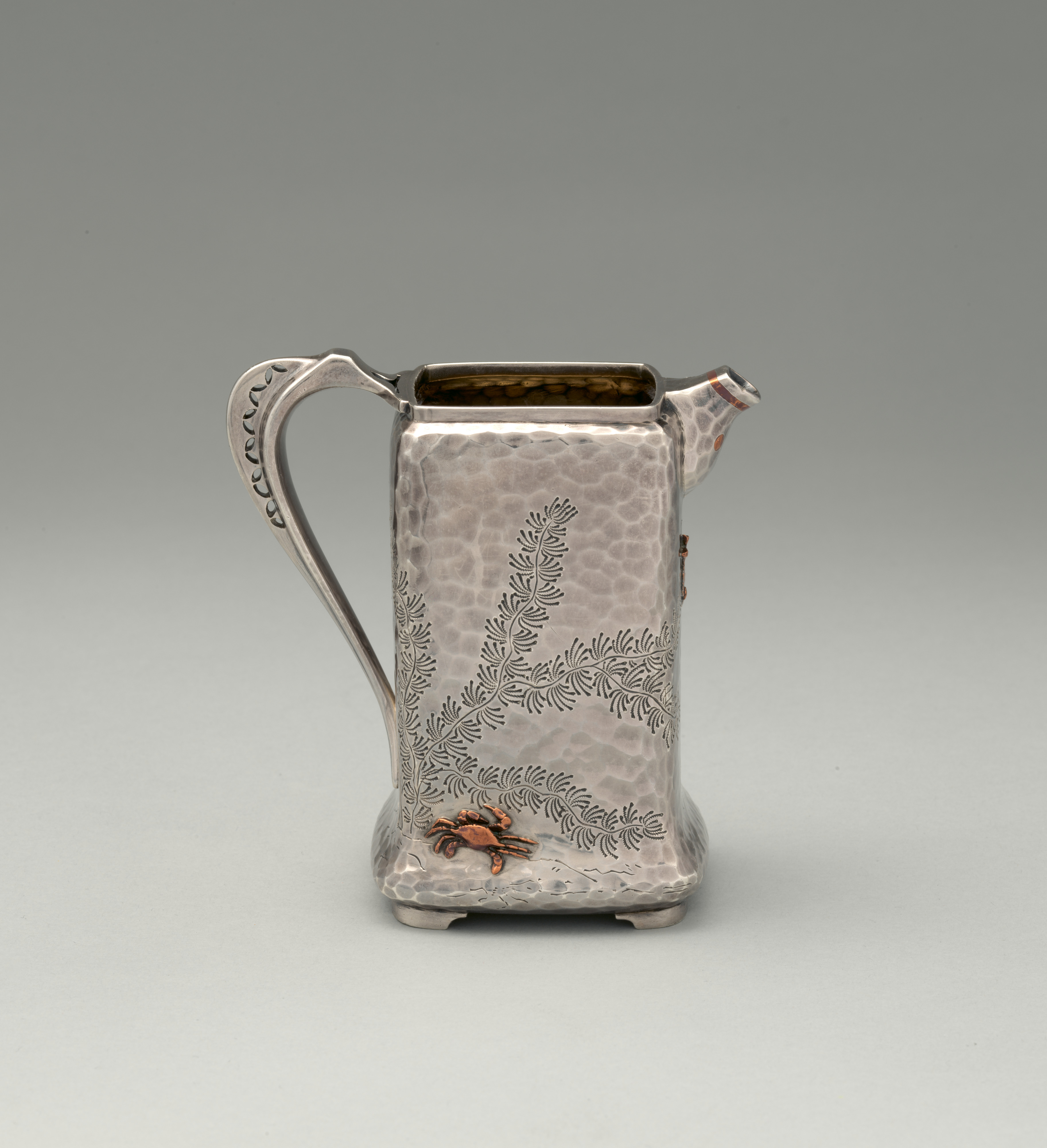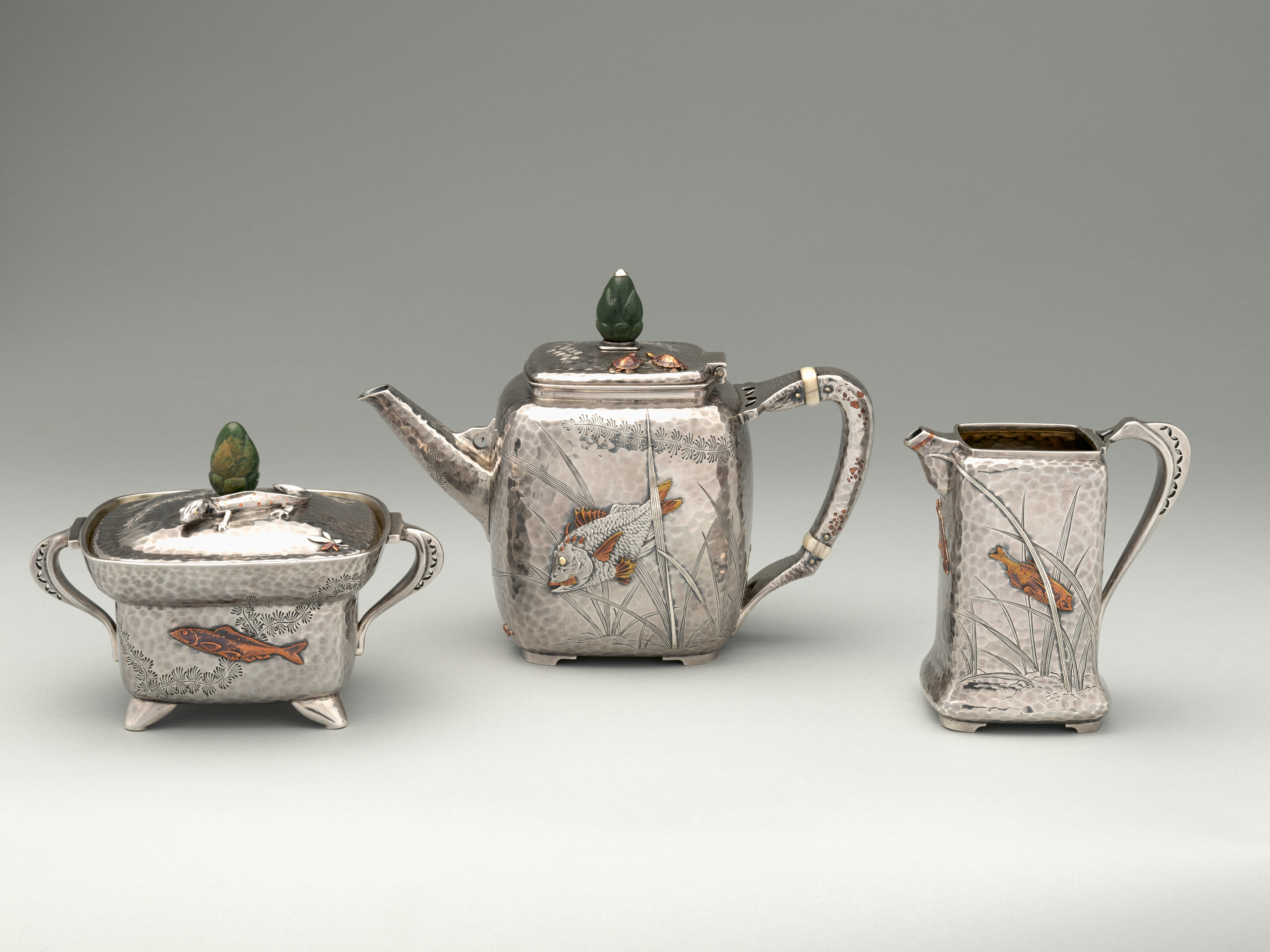Creamer
During the second half of the nineteenth century, Tiffany & Co. rose to prominence as the leading American silversmithing firm and an influential international trendsetter and tastemaker. The 1870s and 1880s witnessed unprecedented innovation and creativity at the firm. Silver in the Japanese taste was among the most popular and celebrated work produced at Tiffany’s during these years. Indeed, Tiffany & Co. won the Grand Prize for silverware at the 1878 Paris Exposition Universelle, with the judges citing the originality and virtuosity of the firm’s Japanesque silver. Edward C. Moore (1827-1891), the head of Tiffany’s silver division, assembled a significant collection of Japanese objects to inspire his designers and craftsmen. The silver they produced did not copy Japanese models but, instead, incorporated Japanese aesthetic sensibilities and techniques into fresh and wholly innovative designs. This tea set’s asymmetrical compositions, whimsical renderings of fish and reptiles, and use of mixed metals to achieve striking contrasts reflect the extent to which Tiffany’s designers and silversmiths had internalized Japanese design principles and techniques. Their Japanesque silver prompted the English designer Christopher Dresser (1834-1904) to write in a letter to the firm, "No silversmith, that I know, has made the progress in art as applied to their industry in the last few years, that you have….you occupy the proud position of being the first silversmith of the world."
Due to rights restrictions, this image cannot be enlarged, viewed at full screen, or downloaded.
This artwork is meant to be viewed from right to left. Scroll left to view more.





